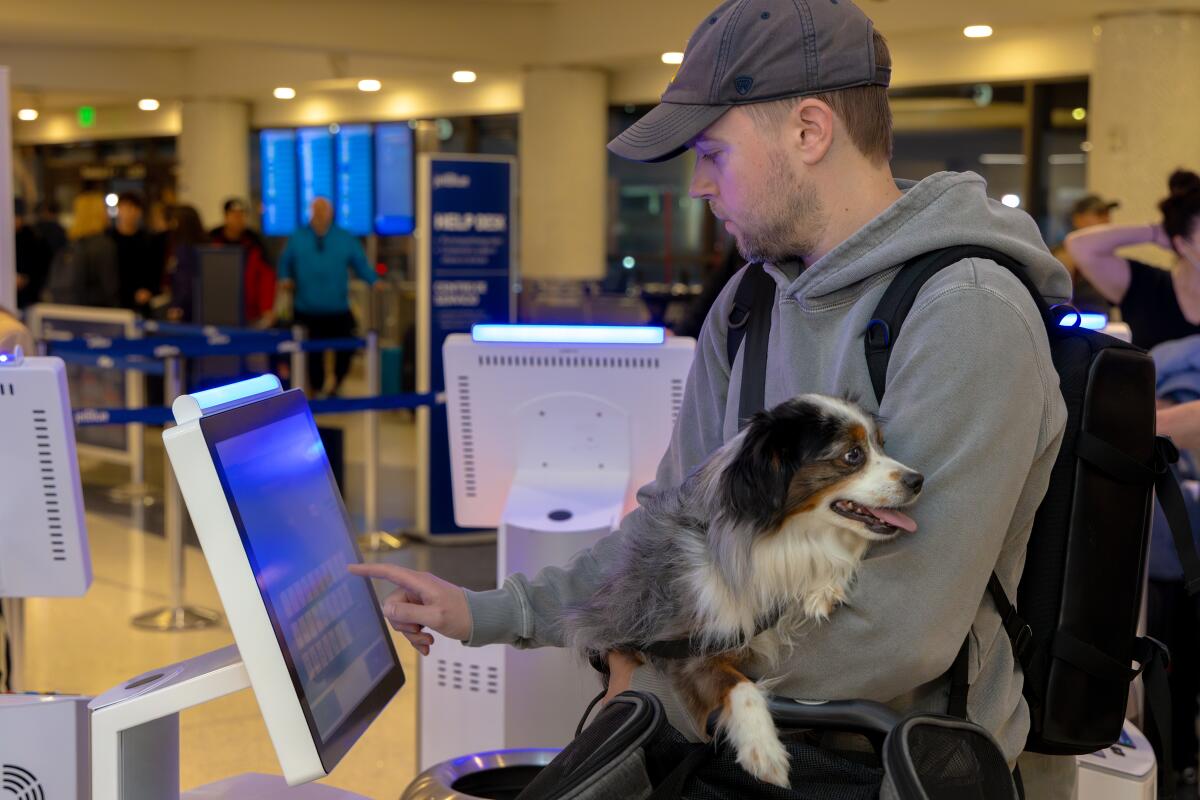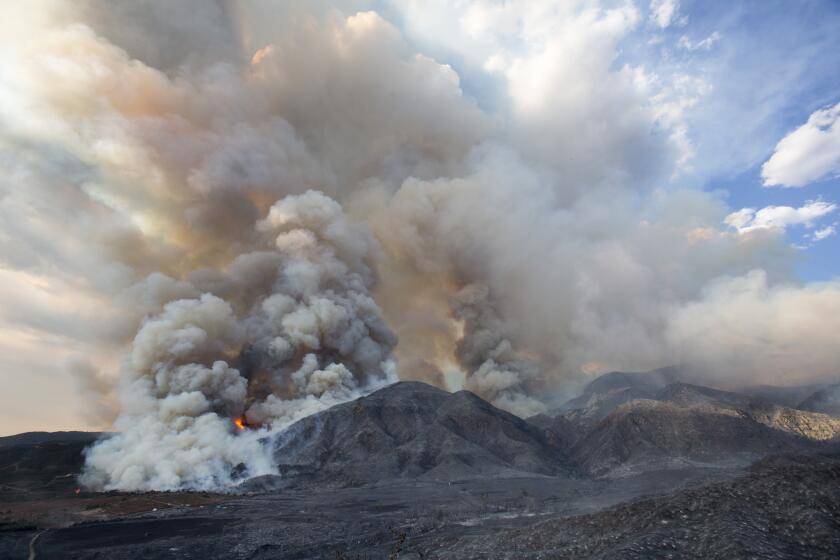Record-breaking holiday travel lightens our spirits but darkens the climate picture

- Share via
The jetliner was packed so tight that I couldn’t even work on my laptop. The tray table was too low and the seat in front too far back. The screen on the seat in front was too close for my eyes to focus on a movie. I’ve opened cans of sardines that seemed to have more room.
My partner, Rick, and I were among the 7.5 million estimated U.S. air travelers this holiday season, a record number since the American Automobile Assn. started tracking numbers in 2000. We headed from LAX to New York City to visit family, longtime friends, museums and trees glistening with Christmas lights. And given the complete dearth of empty seats on our flight, the AAA estimates seem to be right.
Why can’t I roll into an airplane in my power wheelchair the way I can with buses, trains and buildings?
The number of air travelers this year is dwarfed by the 108 million or so people expected to drive 50 miles or more to a holiday destination from Dec. 23 to Jan. 1. That’s the second highest since AAA started tracking in 2000.
This is a reason to celebrate for several reasons. Gas prices are down slightly from earlier this year. Same for airfare. People are feeling safer about COVID-19 and getting out and enjoying the company of loved ones. Many no longer feel they need to stay close to home in case they get sick.
Rick and I understand that concern. Last January we took a trip to New York to revel in the city’s plays, museums and great food, but we both got COVID within a few days. Our cases were mild but it took more than a week to test negative, which meant a longer and more expensive stay with little to do but stare out the hotel window before we could head home.
Lead is unsafe at any level and was phased out of gasoline decades ago. But it’s still being spewed into the air at general aviation airports across the country. It’s past time to stop using it as fuel for small piston-engine aircraft too.
This time, we got the new COVID vaccine two weeks before traveling for maximum protection and masked semi-religiously throughout the trip. We’ve been home for more than a week and all is well so far. Well, almost.
There’s a down side to this, and to every other happy travel story. Record holiday travel means a lot of damage to the planet from greenhouse gases. Airplane travel is a particularly harmful form of transportation beyond its large carbon footprint, according to the nonprofit organization Transport & Environment. The nitrogen oxides emitted from planes form contrails and clouds at high altitude, trapping heat that radiates from the earth below. That contributes twice as much to global warming as the plane’s carbon dioxide output.
The state’s official inventory of greenhouse gases omits wildfires, aviation, shipping and other sources. Uncounted pollution sources are a global problem.
The climate footprint for two people on a commercial cross-country flight is about the same as for driving across the country, according to the climate consulting firm Terrapass. For three or more people, it would be less harmful to the environment to drive.
This is the kind of nerdy, guilt-inducing calculation that makes environmentally concerned people question how to travel while trying to be kind to the Earth. But let’s get real: We’re not going to drive to New York and back for a nine-day vacation, no matter how the figures add up. And we’re not going to stop seeing the people we love, within driving distance or not. (Because of the numbers of cars on the road, they’re still the biggest transportation climate-change contributor.)
Editorial: Funding for California’s bullet trains puts the high-speed rail revolution back on track
The Biden administration’s $6-billion investment in high-speed rail lines in California and Nevada is a big step toward building a clean, fast rail network for the rest of the nation.
Policy makers understand how to reduce the carbon footprint of local travel. That was obvious during our New York City trip. We got around quickly and easily by subway and (more slowly) on an occasional bus. We walked seven to eight miles a day. Bike lanes were everywhere and they were used. Accepting greater density near mass transit and planning walkable cities make a major difference.
But in a spread-out nation like ours, we need better long-distance travel solutions such as electric-powered bullet trains that can whisk us hundreds of miles on clean, renewable energy, more electric cars and the fast-charging infrastructure to make them viable for long drives. The airline industry is looking into using more sustainable fuel that causes somewhat less harm to the environment, though it still needs to be mixed with large amounts of traditional jet fuel. We don’t have to give up on travel or the planet if we get to work on this.
Avoiding COVID is another matter. Two days after returning home, we drove 75 miles to a small family Christmas party. (There was no mass transit to get us to and from our destination.) We didn’t wear masks. And I just learned that the man sitting next to me at the party tested positive soon after. It seems greenhouse gas emissions are a lot easier to calculate than COVID risks.
More to Read
A cure for the common opinion
Get thought-provoking perspectives with our weekly newsletter.
You may occasionally receive promotional content from the Los Angeles Times.














